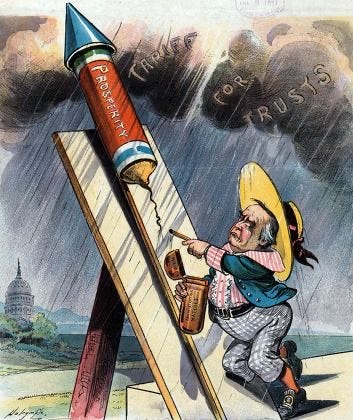A Historical Examination of Tariffs: When Protectionism Benefited the Working Class
To understand the current debate surrounding tariffs, it's useful to look back at history. In the 19th and early 20th centuries, tariffs were often seen as a key pillar of American economic policy, playing a crucial role in shaping the nation's industrial landscape. For much of this period, tariffs were high, serving as a barrier to foreign goods that could undercut domestic production.
The Tariff of Abominations (1828), for example, was a significant piece of legislation that aimed to protect emerging American industries—such as textiles—from cheaper foreign imports. The tariff was controversial and led to a fierce debate over states' rights, but it also set the stage for the U.S.'s industrialization by shielding nascent industries from foreign competition.
As the U.S. economy shifted from an agrarian base to an industrial one, tariffs continued to protect American manufacturers. The McKinley Tariff (1890), one of the highest protective tariffs in American history, raised duties on imported goods and provided a shield for growing industries. By making imported goods more expensive, these tariffs made American-made goods more appealing, driving demand for domestic products and boosting local jobs.
Perhaps the most well-known protectionist measure in U.S. history is the Smoot-Hawley Tariff Act (1930), which raised tariffs to unprecedented levels in an attempt to protect U.S. jobs during the Great Depression. While the Act is often blamed for exacerbating the economic downturn by igniting global trade wars, it did reflect a period when protectionism was seen as essential for safeguarding American industries and workers from the economic fallout of foreign competition.
Throughout the late 19th and early 20th centuries, tariffs helped create an environment where American manufacturing flourished. Factories were built, and working-class jobs were created in industries like steel, textiles, and machinery. These industries employed millions of Americans and helped establish the middle class. In many ways, tariffs helped elevate the standard of living for the working class by ensuring that their jobs remained competitive and stable, at least in the short term.




